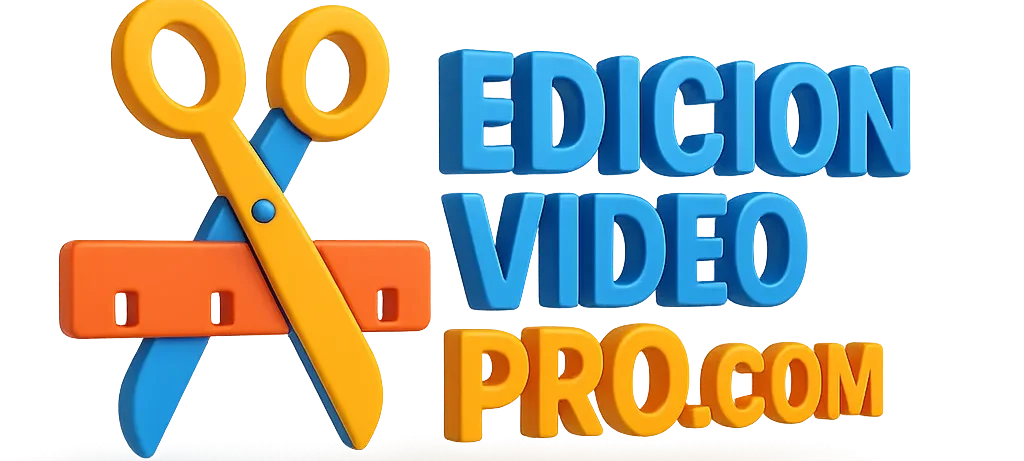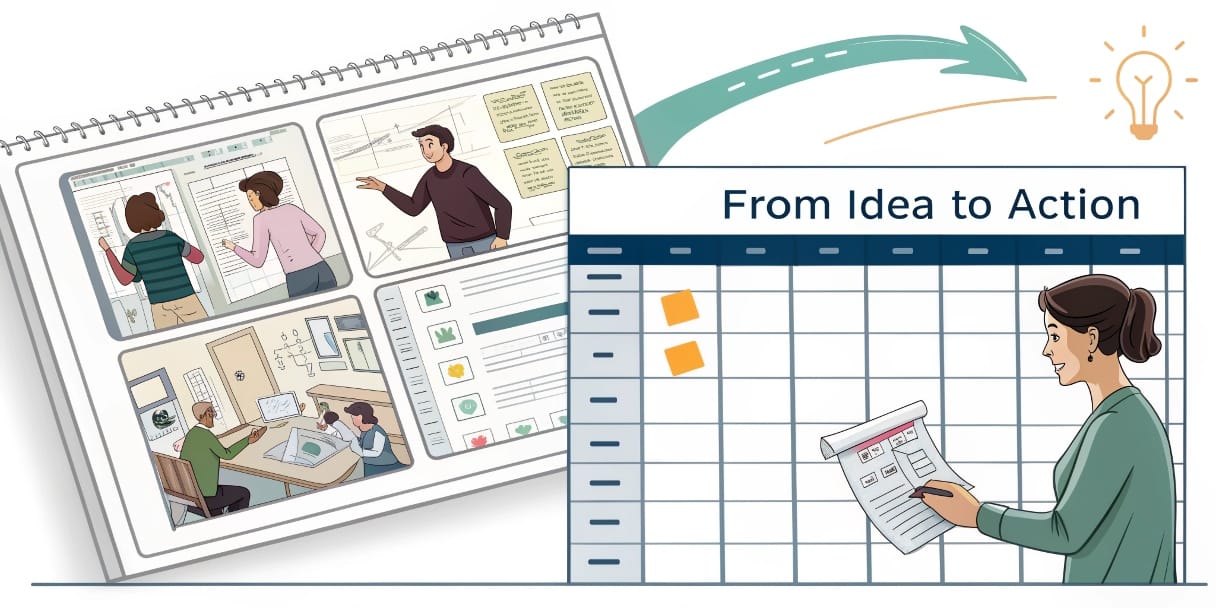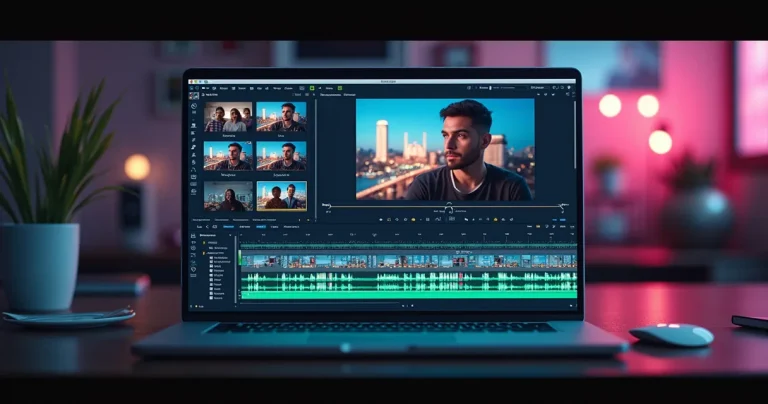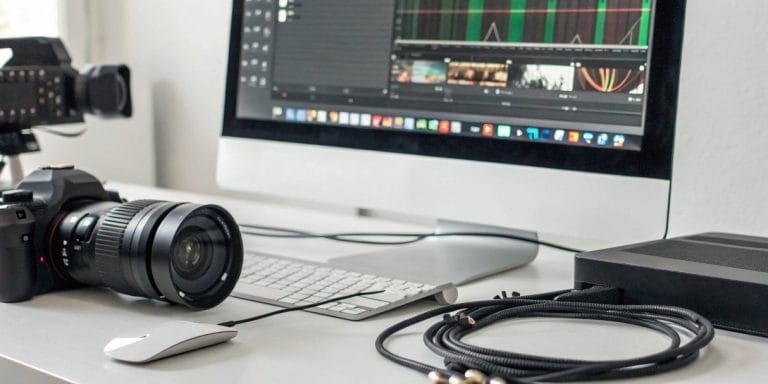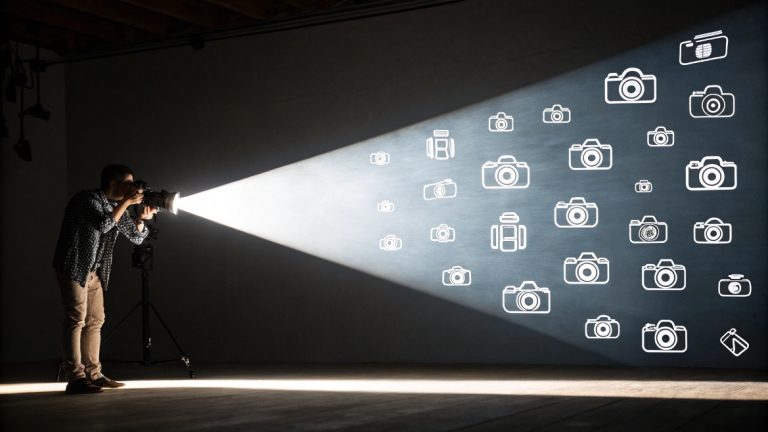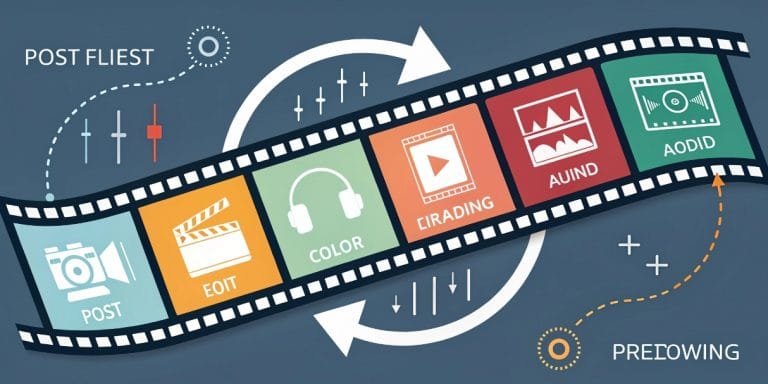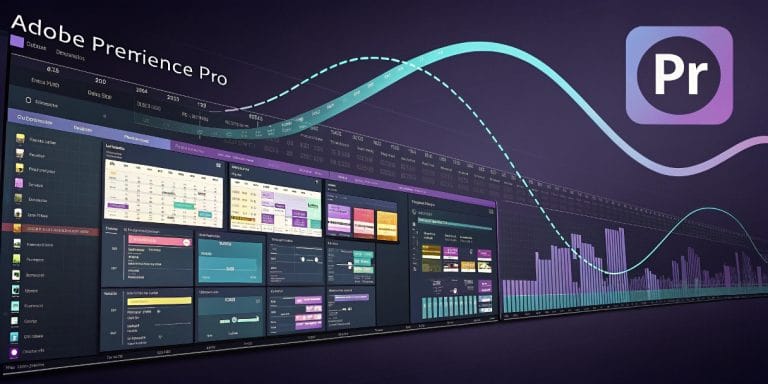Storyboard and Shot List: Visualize Your Video (Save Time)
Your video script is ready—congratulations! You know WHAT you want to say. But do you know HOW it will look or the order in which you’ll film each shot? This is where two powerful pre-production tools come into play: the storyboard and the shot list.
You might think storyboards are only for animated films or big-budget productions, or that shot lists are too formal for your videos. Think again! At VideoEditingPro, even for seemingly simple projects, taking time to visualize and plan shots saves countless hours during filming and, most importantly, in the editing suite.
These tools help translate your script’s words into a clear visual sequence, ensuring everyone involved (even if it’s just you) shares the same vision and that no critical shots are forgotten.
What Is a Storyboard and Why Use It? (Your Visual Blueprint)
A storyboard is a sequence of sketches or images representing key shots in your video, paired with notes about action, dialogue, or audio. Think of it as a comic strip that maps out your story visually.
Benefits of a Storyboard:
- Clear Visualization: Lets you “see” your video before filming. Helps identify if the visual narrative works.
- Shot Planning: Decide shot types (wide, medium, close-up, detail, etc.) for each moment.
- Team Alignment: Serves as a visual guide for collaborators (camera crew, actors, clients).
- Problem Solving: Catch awkward transitions or missing shots before wasting time and resources.
- Shot List Foundation: Simplifies creating your shot list.
You don’t need to be an artist! Storyboards can range from simple stick figures to reference photos or software-generated images. What matters is conveying framing and action.
Example of a storyboard panel for video visual planning.
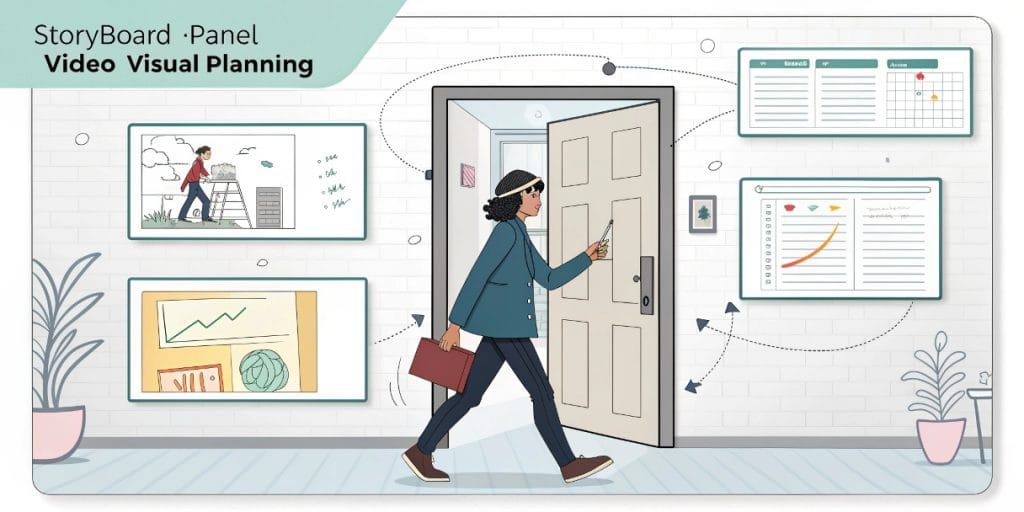
What Is a Shot List and Why Is It Your Best Friend on Set?
A shot list is a detailed document (usually a spreadsheet) listing every individual shot needed for your video, organized for filming efficiency (not necessarily the final edit order).
Benefits of a Shot List:
- On-Set Organization: Know exactly what, when, and how to film. No more “What’s next?” moments.
- Efficiency: Group shots by location, camera setup, or lighting to optimize time.
- Nothing Missed: A checklist to ensure all required footage is captured. Say goodbye to “I wish I’d filmed a shot of…” regrets!
- Team Clarity: Everyone knows what’s needed.
- Simpler Editing: When importing footage, you’ll have a reference for each take.
Typical Shot List Elements
| Scene # | Shot # | Shot Description | Subjects/Objects | Audio | Location | Notes | Filmed? |
|---|---|---|---|---|---|---|---|
| 1 | 1.1 | WS Host enters office | Host | VO Intro | Office | Tripod, window light | ✔️ |
| 1 | 1.2 | MS Host speaks to camera | Host | Dialogue Pt1 | Office | Lavalier mic | |
| 2 | 2.1 | CU Product on table | Product X | (BGM) | Studio | Soft light, neutral backdrop |
Example spreadsheet shot list detailing shots for a video production.
How to Create Your Storyboard and Shot List: A Simple Process
Step 1: Start With Your Script
Reread your script. Highlight key scenes and moments needing visual representation.
Step 2: Sketch Your Storyboard (No Artistic Fear!)
- For each key moment, draw a simple frame.
- Sketch the composition: Where are subjects/objects? What shot type (WS, MS, CU)? Any camera movement (pan, dolly)?
- Add notes below each frame for action, dialogue, or audio.
- Tools: Paper/pencil, storyboard apps (Canva, Boords, Storyboarder), or PowerPoint/Keynote.
VideoEditingPro Tip: Focus on clarity, not artistry. We’ve used stick-figure storyboards—they work!
Step 3: Build Your Shot List From the Storyboard
- Review your storyboard and script. Create a shot list entry for each visual moment.
- Include all shots needed, like B-roll for coverage.
- Detail shot type (WS, MS, CU), angle, movement, subjects, and technical notes.
Step 4: Organize Shots for Efficiency
Group shots by location, lighting setup, or actor to minimize changes. Example: Film all “office” shots together, even if they’re scattered in the final edit.
Bonus Editing Room Benefits
Storyboards and shot lists aren’t just for pre-production:
- Faster Edits: Quickly locate clips and their purpose.
- Narrative Consistency: Stick to your planned visual flow.
- Identify Gaps: Spot missing footage early.
- Editing Roadmap: The storyboard acts as a first draft of your edit.
Overwhelmed by visual planning? At VideoEditingPro, pre-production is baked into our full-service projects. We’ll help define your vision, plan shots, and ensure smooth editing for a standout final product. Let us be your eyes before filming.
FAQ – Storyboard and Shot List
Do I always need BOTH a storyboard and shot list?
For complex or visual-heavy projects, yes. For simple talking-head videos, a detailed script with visual notes or a basic shot list may suffice. But storyboards always help you think visually.
How detailed should storyboard sketches be?
Detailed enough to show framing and action. Arrows for movement, stick figures—clarity beats artistry.
Can I use photos instead of drawings?
Absolutely! “Photoboards” (reference photos of locations or test shots) work great.
Visualize Success, Film With Purpose
Investing time in storyboards and shot lists might feel like extra work upfront, but we promise it leads to an organized shoot, faster editing, and ultimately, a higher-quality video that aligns with your vision.
These tools force you to think visually, plan each shot, and communicate ideas clearly. Start using them in your next project—you’ll see the difference!
Need a team to guide you from concept to final edit? VideoEditingPro is here to turn your ideas into reality.
